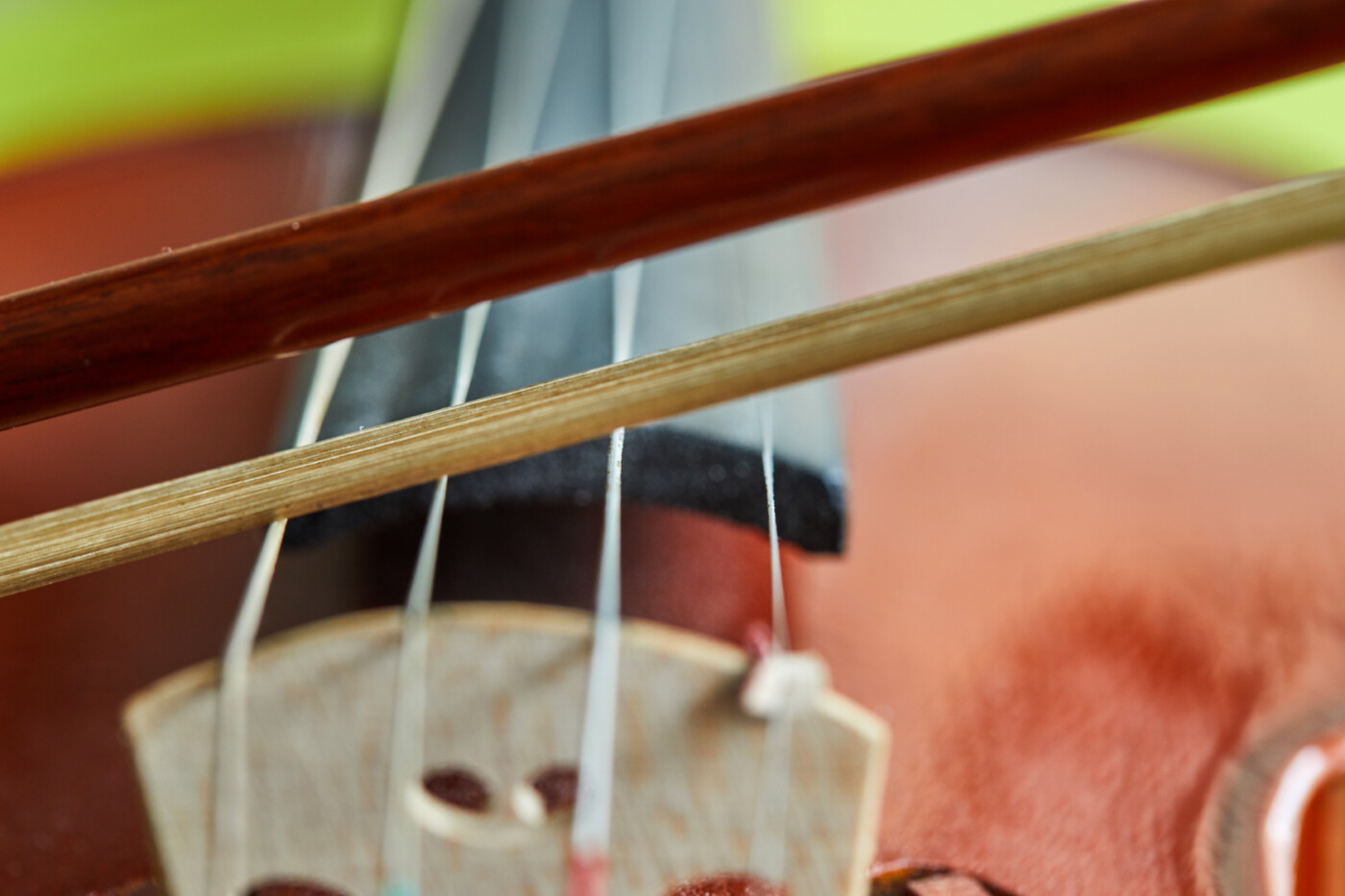What Impacts Violin Tone? A Look at Tone Production for Violinists
By ViolinLab.com
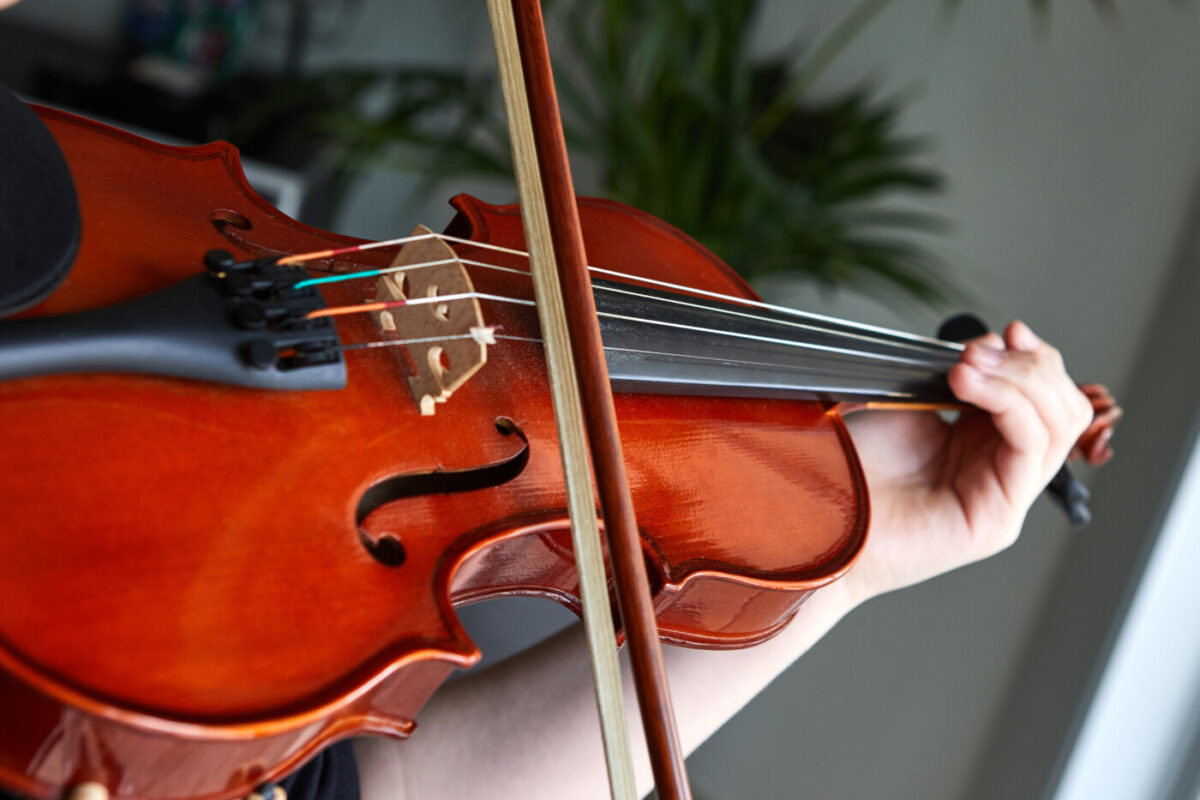
Tone is the voice of the violin, and by controlling our “voice”, we communicate emotion, shape phrases, and create musical meaning. While tone is often thought of as a mysterious quality that “just happens” with experience, the good news is that tone production is a craft. It’s the result of understanding physical principles, developing control over those principles, and learning to listen critically to ourselves while playing. In this blog, we’ll explore the many factors that influence violin tone and how to approach them with awareness in your practice.
1. Quality of Violin Construction
Before tone even reaches your ears, it begins with the physical design and acoustical properties of the violin.
- How sound is produced: A vibrating string sets the bridge in motion, which transfers energy to the top plate, setting the entire body of the violin resonating. This complex system creates the rich spectrum of overtones we hear as “violin tone.” The quality and age of the wood along with craftsmanship predetermine the tonal capabilities of your instrument.
- Bridge setup: A properly fitted bridge—one that matches the curvature of the top plate and is the correct thickness—helps transmit sound efficiently. If the feet aren’t flush with the violin’s top, tone will suffer.
- Tailpiece length and setup: A tailpiece that is too short or too long can interfere with the after-length of the strings, subtly affecting resonance.
- Find a luthier: It’s worth every penny to have an experienced luthier evaluate the quality of your set up. Inexpensive violins can be improved immensely with a professionally cut bridge.
Even the best player will struggle to produce a beautiful sound on a poorly set-up instrument.
2. The Quality and Age of Strings

Strings play a critical role in tone production, and both their quality and age can significantly affect the sound of your violin.
- Low-quality strings tend to produce a strident, harsh sound and lack tonal complexity.
- Old strings often lose clarity and resonance, even if they look intact.
- Worn or dirty strings can begin to squawk or sound dull and unresponsive.
- False strings (when a string no longer vibrates at the correct frequency) can distort pitch and interfere with sympathetic vibrations, affecting overall tone.
- Regular replacement is important—most players should change strings about every six months, depending on playing frequency.
Maintaining fresh, good-quality strings is one of the simplest ways to ensure your violin produces a consistent, pleasing tone.
3. Perpendicularity of Bow to Vibrating String
The tiny fibers of the horse hair grab and pull the string most effectively when the hair is traveling perpendicular to the vibrating string.
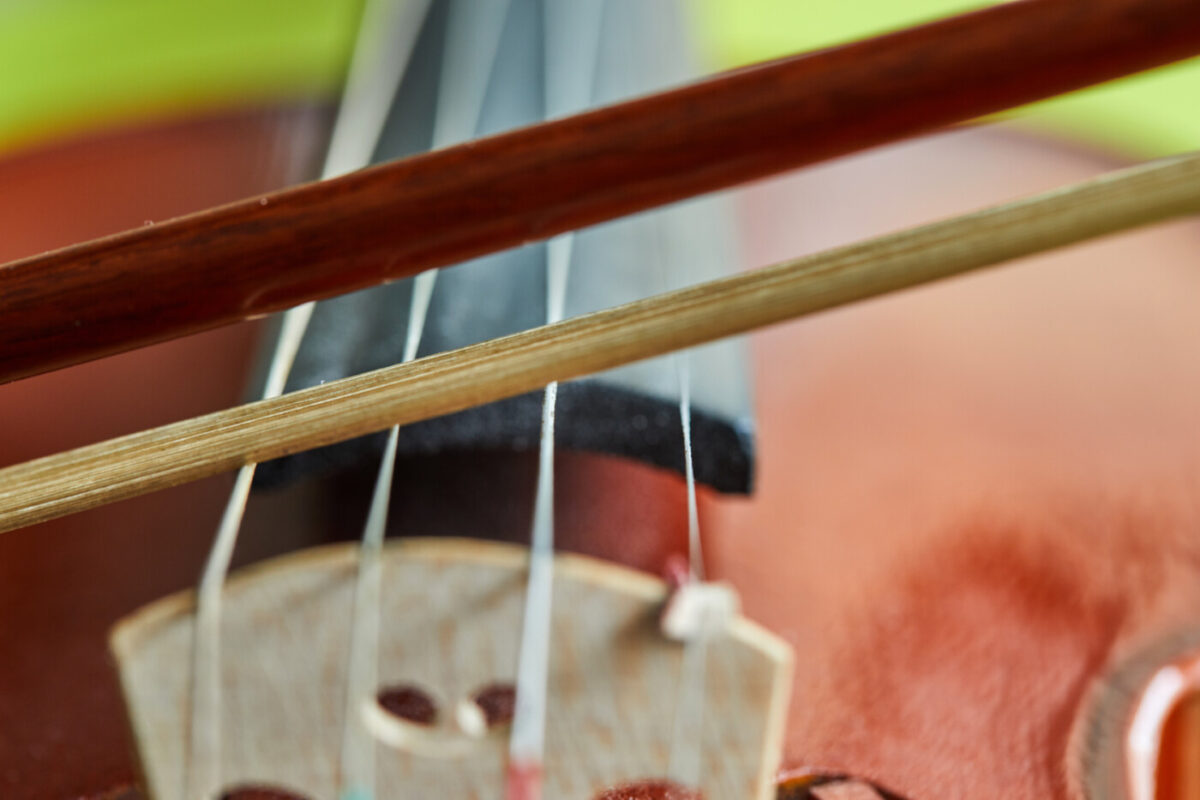
- Why straight bowing matters: The string must vibrate freely and widely to produce a beautiful tone. If the bow skews, it causes irregular friction, distorting the sound.
- Articulation and bow direction: The more clearly you want a note to speak (such as in fast or staccato passages), the more essential it becomes to maintain a straight bow path.
- Postural balance: To draw a straight bow, the body must remain balanced and aligned. A stiff shoulder or wrist will distort your bow path, even if you’re aiming for straightness.
4. The Physics of Intonation and Tone
Intonation isn’t only about pitch—it also deeply affects tone.
- Ring tones and sympathetic vibrations: When your intonation aligns with the instrument’s natural resonances (e.g., open strings, perfect intervals), you’ll hear a boost in sound due to sympathetic vibrations.
- Blending intervals: Playing in tune allows the vibrations of double stops and chords to interact harmoniously, enhancing overall tone.
- Subjectivity of intonation: There’s no single correct placement for every note. For example, a leading tone may need to be slightly higher than equal temperament to sound expressive. These micro-adjustments affect tone color.
5. Components of Basic Violin Tone Production
All bow strokes rely on four interrelated components:
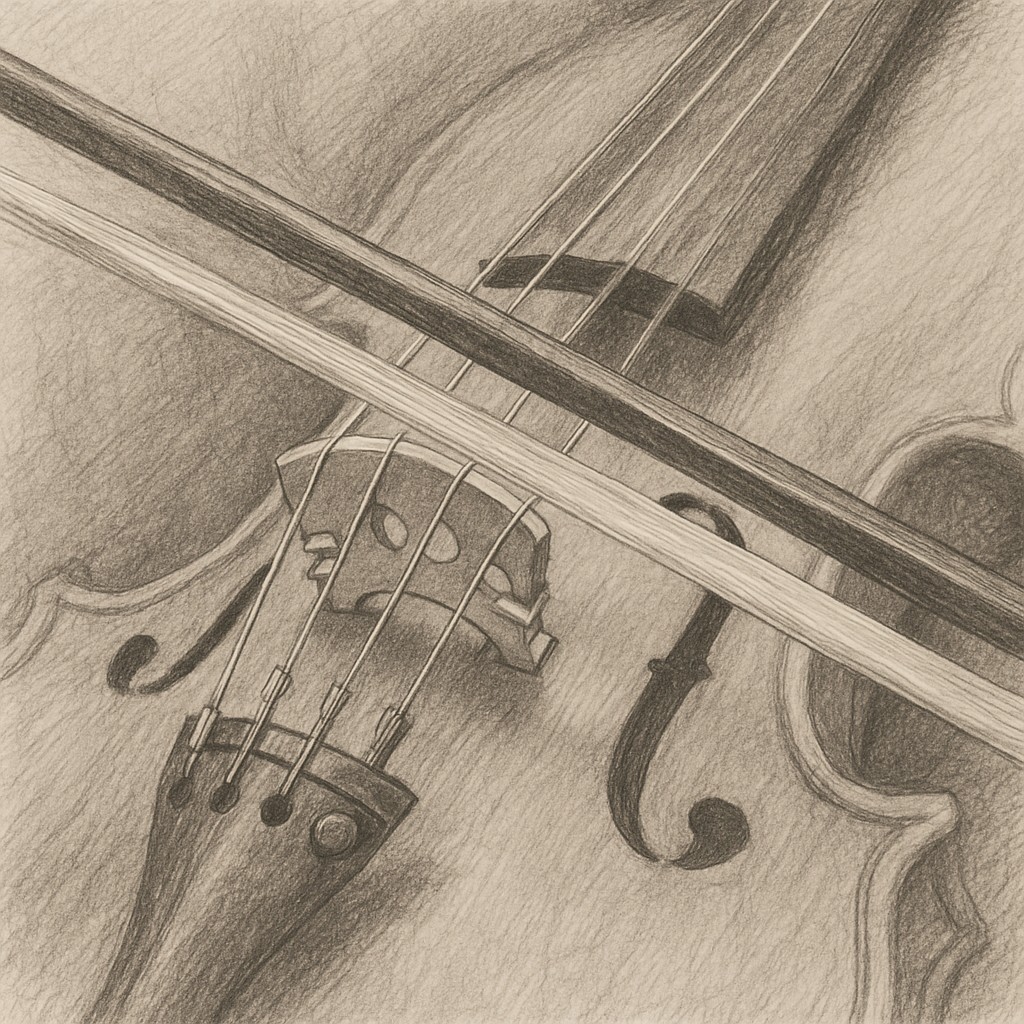
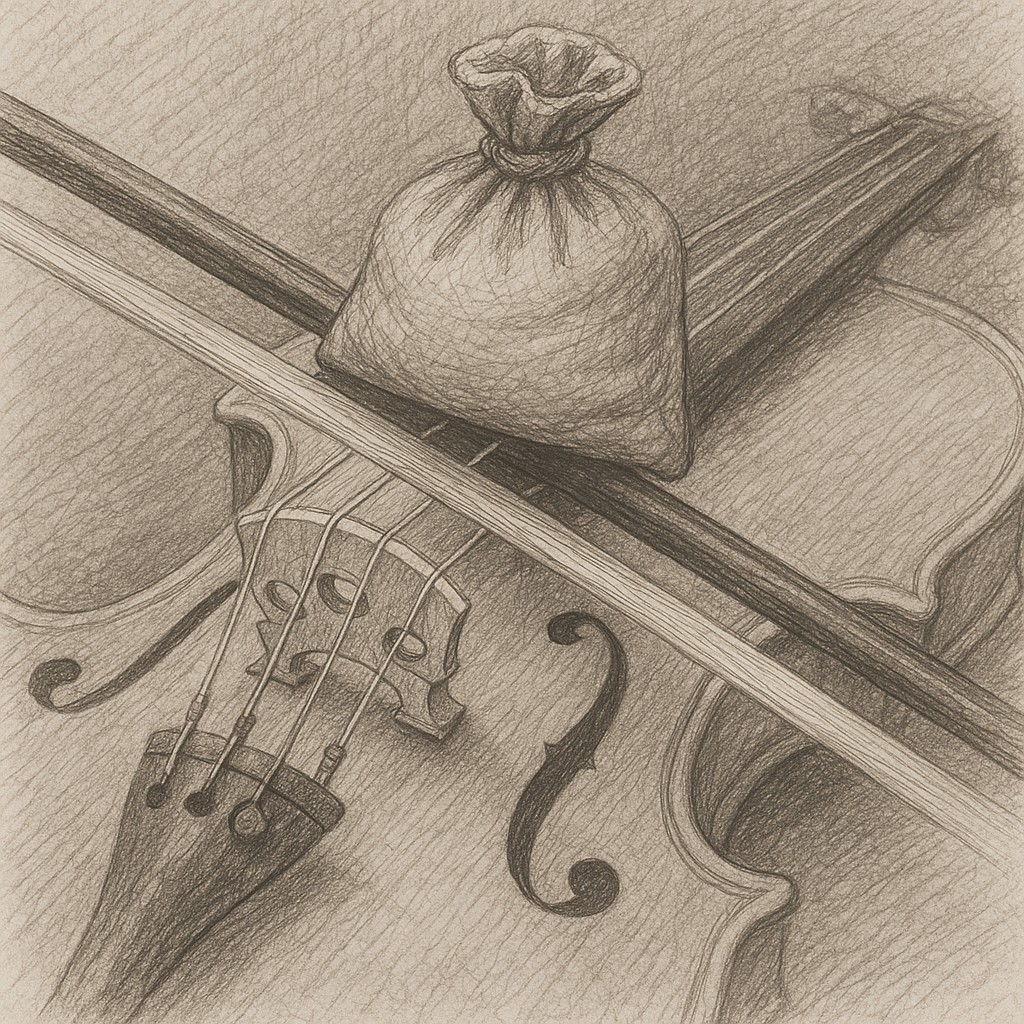
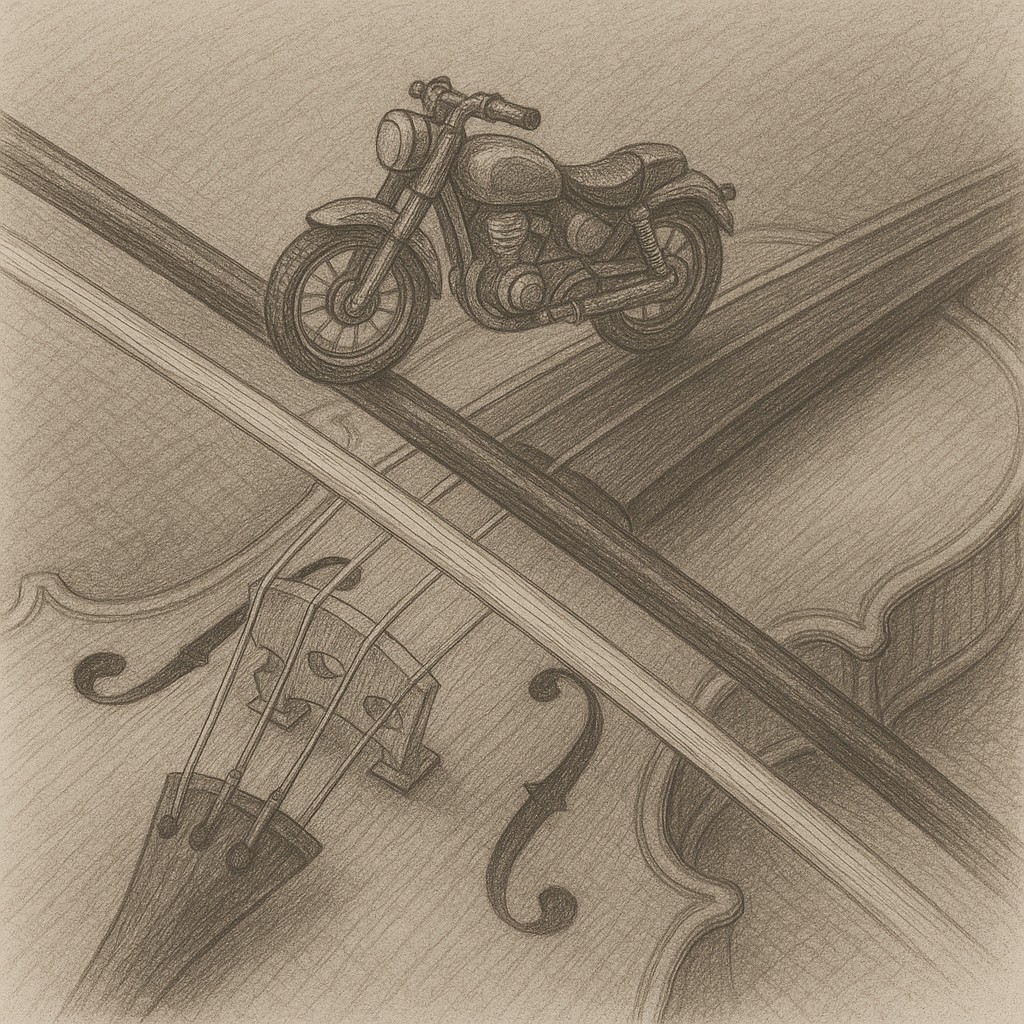
- Placement (bow lane/sounding point): The location of the bow between the bridge and fingerboard affects brightness or warmth. Closer to the bridge = brighter and more focused. Closer to the fingerboard = softer and less focused.
- Bow Speed: Faster bow speeds generally create a more resonant sound but must be matched with appropriate weight and placement.
- Bow Pressure (Bow Weight): Bow Pressure refers to the amount of force into the string. Too much pressure will choke the sound; too little results in a tinny, whistling tone.
- Bow Tilt: Adjusting the tilt of the bow changes how much hair touches the string, giving you subtle control over dynamics and timbre. The greater the tilt, i.e. the less hair on the string, the more dolce the tone.
6. Shaping Tone into Color and Expression
Tone is never static—it’s the foundation for expression.
- Use adjectives: Start labeling your tone using words like warm, focused, airy, biting, or mellow. This helps train your auditory imagination.
- Explore limits: Find the edges of your instrument’s tonal capacity—what’s the fullest sound you can make before it crunches? How soft can you go while still maintaining tone?
- Tone as communication: Imagine whispering something important rather than shouting. Tone should be intentional, even when playing quietly. Conversely, play closer to the bridge to add intensity, a quality that the human voice assumes when communicating an idea with heightened emotion.
- Frequent tone changes: Don’t just think in terms of loud and soft. Shaping phrases often means shifting tone quality, not just volume.
- Bow speed and pressure coordination: As one changes, so must the other. For example, slowing down the bow requires either more pressure or closer placement to the bridge.
7. Other Technical Elements that Affect Tone
Tone isn’t just about the bow hand. It involves the full coordination of both hands and the body.

- Right hand/arm mechanics:
- Use natural weight from the shoulder rather than trying to “press” hard.
- Use varying degrees of pronation with the forearm to control the amount of bow pressure. This creates subtle shadings that give life to the musical phrase.
- Each finger plays an active role in balancing the bow—especially the index and pinky. Stiff, unmoving fingers prevent nuanced subtlety in playing. Become a member of Violin lab to develop a professional bow hand!!!
- Anticipate string crossings to keep the sound connected.
- Left hand impact:
- Finger action must be quick and accurate for clean tone. If the finger is slow to “stopping” the string, the result will be a high scratchy, whistle like tone at the beginning of the bow stroke.
- Prepare fingers efficiently to avoid tension and missed notes.
- Use of vibrato:
- Vibrato enhances tone by enriching the harmonic spectrum.
- The wider the vibrato amplitude, the more resonance is created. A narrow vibrato can often times not even register as “vibrato”. Experiment with amplitude to find the most beautiful tone you can.
- Sustaining tone through techniques:
- Maintain tone across bow changes.
- Don’t lose tone quality in spiccato or ricochet—these strokes still need “core.”
- Match the tone of up-bows and down-bows.
- Keep tone consistent on string crossings and during double stops.
8. Troubleshooting Tone Issues
When your tone isn’t where you want it, start by checking the basics.
- Is the bow aligned properly on the string?
- Are your hands and joints relaxed, or is there unnecessary tension?
- Is there good coordination between both hands?
- Is there sufficient weight from your lefthand fingers to stop the string?
- Is your shoulder stiff?
- Are you using your back muscles with a low placed shoulder joint to produce a full sound?
Many tone problems stem from imbalances or lack of awareness rather than lack of ability.
9. Practice Strategies for Tone Development
- Play slowly: Even in fast passages, take time to hear the core of each note at a slow tempo.
- Create a dynamic plan: Think through where the music swells, retreats, or changes in character.
- Mark your music: Don’t rely on memory—remind yourself of tone intentions with clear markings.
- Practice with dynamics from the beginning: Don’t save tone shaping for the final stage. Integrate it from the beginning.
Good tone is not magic—it’s the result of understanding, listening, and practice. As you grow more aware of how your hands, posture, and mind interact with the violin, your tone will become more personal and expressive. Take time to explore each of these areas in your practice. The more awareness you bring to tone when you practice, the more instinctual it will become. Then someday you will play expressively without thinking about it.
